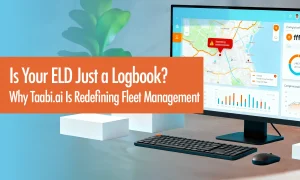The integration of IoT predictive maintenance into fleet management revolutionizes the way logistics operations are conducted. By harnessing the power of the Internet of Things (IoT), predictive maintenance strategies employ real-time data analytics and machine learning algorithms to anticipate and address potential vehicle malfunctions before they occur. This proactive approach to vehicle health monitoring ensures that fleet vehicles are always in optimal condition, thus reducing downtime and maintenance costs.
Moreover, improved fleet uptime directly translates to more consistent and timely deliveries, a crucial aspect in customer satisfaction and competitive advantage in the logistics industry. With vehicles spending less time in repair and more time on the road, logistics companies can achieve higher throughput, better resource utilization, and improved service levels. This operational efficiency is particularly vital in an economy where delivery speed and reliability are key determinants of customer loyalty.
In addition, by adopting IoT predictive maintenance, logistics companies can enjoy a more streamlined and efficient maintenance process. It allows for better scheduling of vehicle repairs, ensuring that maintenance work is carried out during off-peak hours, thus minimizing disruption to the logistics operations. This level of scheduling flexibility and efficiency is a game-changer in fleet management.
IoT predictive maintenance represents a revolutionary shift in managing fleet operations, especially in the logistics sector. It plays a critical role in how to improve fleet uptime, ensuring that vehicles are not just operational but also efficient and safe. But understanding what IoT-based predictive maintenance is and the technologies that drive it is essential to appreciate its impact.
At its core, IoT predictive maintenance is a proactive approach that uses the Internet of Things (IoT) to monitor and analyze the health of vehicles in real-time.
This strategy goes beyond traditional preventive maintenance, which is based on scheduled checks and routine services. Instead, IoT predictive maintenance utilizes a continuous stream of data from various sensors embedded in fleet vehicles.
This data cprovides insights into the current state of each vehicle, allowing for timely interventions before potential issues escalate into major breakdowns. This approach is integral to effective uptime management, as it reduces unplanned downtime and extends the life of fleet vehicles.
The backbone of IoT predictive maintenance is the advanced technologies that process and analyze the data collected. Key among these are:
These are the ‘eyes and ears’ of IoT predictive maintenance. Sensors fitted in vehicles collect a wide range of data, including engine performance, fuel usage, tire pressure, and more. Telematics technology then transmits this data for further analysis.
The heart of IoT predictive maintenance lies in data analytics and machine learning algorithms. These technologies analyze the sensor data to identify patterns and predict potential failures. This level of analysis is crucial for effective vehicle health monitoring.
Cloud platforms play a pivotal role by offering scalable and secure storage for the massive amounts of data generated. They also facilitate the integration of predictive maintenance systems with other business operations, enhancing overall efficiency.
AI enhances predictive maintenance by providing advanced decision-making capabilities. It helps in interpreting the data, predicting maintenance needs, and scheduling maintenance activities efficiently.
IoT predictive maintenance is transforming how logistics companies approach fleet management. By combining real-time vehicle health monitoring with predictive analytics, it ensures that fleets are not only operational but also optimized for performance. This shift from preventive maintenance to predictive maintenance is paving the way for enhanced fleet uptime and operational efficiency in the logistics sector.
IoT predictive maintenance has emerged as a game-changer in the logistics industry, offering several strategic approaches to improve fleet uptime. These strategies are an amalgamation of advanced technologies, data analytics, and proactive maintenance practices, all working towards enhancing uptime management. Let’s explore some of these key strategies:
The cornerstone of IoT predictive maintenance is the continuous monitoring of vehicle health. This involves installing various sensors in fleet vehicles that collect data on engine performance, wear and tear of parts, fuel efficiency, and other critical parameters. This vehicle health monitoring is more than just data collection; it’s an ongoing process of assessing the operational status of each vehicle. By constantly tracking this data, predictive maintenance solutions can detect anomalies and signs of wear before they evolve into major problems, thus preventing unexpected downtime.
IoT predictive maintenance employs sophisticated data analytics to process and interpret the vast amounts of data generated by the sensors. These analytics tools identify patterns and trends that are indicative of potential issues. This proactive analysis is crucial in determining when a vehicle might require maintenance, thereby optimizing uptime management.
Leveraging machine learning algorithms, IoT predictive maintenance systems can predict future failures by learning from historical data. These algorithms analyze past incidents and maintenance records to identify risk factors and predict when and which components might fail. This predictive aspect is what sets apart predictive maintenance from preventive maintenance, allowing logistics companies to schedule maintenance tasks before issues arise, thereby reducing downtime and improving fleet uptime.
Unlike traditional preventive maintenance that relies on fixed schedules, IoT predictive maintenance tailors maintenance activities based on actual vehicle condition and usage patterns. This customization means maintenance is conducted only when needed, preventing unnecessary downtime and prolonging vehicle life.
The shift from preventive maintenance to predictive maintenance is a strategic move in IoT predictive maintenance. Preventive maintenance follows a set schedule, which can sometimes lead to either over-maintenance or under-maintenance. Predictive maintenance, on the other hand, is based on the actual condition of the vehicle, ensuring that maintenance is performed at the most opportune time.
IoT predictive maintenance employs a range of strategies to enhance fleet uptime. From real-time vehicle health monitoring and advanced data analytics to the integration with fleet management systems, these strategies work collaboratively to predict, prevent, and reduce vehicle downtime. This proactive approach to uptime management is transforming how logistics companies maintain their fleet, leading to more reliable, efficient, and cost-effective operations.
In our efforts towards optimizing fleet uptime and efficiency, the importance of innovative solutions like IoT predictive maintenance cannot be overstated. As we have explored, these technologies not only streamline fleet operations but also herald a new era of reliability and cost-effectiveness in the logistics sector.
Now, it’s time to turn insights into action.
Imagine a system that not only monitors the health of your vehicles in real-time but also predicts maintenance needs, schedules servicing at the most opportune times, and integrates seamlessly with your existing fleet management strategies.
This is what Taabi offers. Our software is designed to be intuitive, user-friendly, and, most importantly, effective in ensuring your fleet operates at its peak.
Don’t let preventable maintenance issues dictate your fleet’s uptime.
It’s time to take a proactive stance, and Taabi is here to guide you every step of the way. Visit our website, explore our solutions, and see how Taabi can transform your fleet management experience. The future of logistics is here, and it begins with Taabi’s advanced vehicle health management software.








